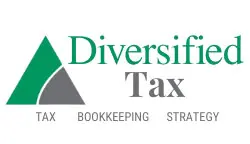Understanding the Differences Between Payroll and Income Tax
Understanding the Differences Between Payroll and Income Tax
Payroll and income tax are two distinct yet interrelated concepts that play a crucial role in personal and business finance. While they may seem similar on the surface, understanding the key differences between these two tax obligations is essential for individuals and organizations alike.
In this article, we will delve into the intricate details of payroll and income tax, exploring their definitions, calculations, and implications, to help you navigate the complexities of tax compliance with confidence.
Understanding Payroll Tax
Payroll tax, also known as employment tax, is a mandatory contribution that employers and employees make to fund government programs such as Social Security, Medicare, and federal and state unemployment insurance. This tax is calculated based on the employee’s gross wages or salary and is withheld directly from their paychecks.
Employer Payroll Tax Obligations
Employers are responsible for withholding and remitting payroll taxes on behalf of their employees. This includes the employer’s portion of Social Security and Medicare taxes, as well as federal and state unemployment taxes. Employers must accurately calculate, report, and pay these taxes to the appropriate government agencies, helping ensure compliance with tax laws and regulations.
Employee Payroll Tax Contributions
Employees also have a share of payroll tax contributions. They are required to pay a portion of the Social Security and Medicare taxes, which are deducted from their gross pay. These deductions are typically shown on the employee’s pay stub, providing a breakdown of the taxes withheld from their earnings.
Payroll Tax Rates and Thresholds
Payroll tax rates and thresholds are set by the government and can vary depending on the specific program and jurisdiction
Understanding Income Tax
Income tax, on the other hand, is a levy imposed by the government on an individual’s or entity’s taxable income. This tax is calculated based on the total income earned from various sources, such as employment, investments, and business activities.
Calculating Taxable Income
Taxable income is determined by subtracting allowable deductions and credits from an individual’s or entity’s total gross income. The resulting figure is then used to calculate the amount of income tax owed, based on the applicable tax rates and brackets.
Income Tax Rates and Brackets
Income tax rates and brackets are established by the government and can vary depending on factors such as filing status, taxable income, and jurisdiction. For example, in the United States, federal income tax rates range from 10% to 37%, with different tax brackets based on an individual’s taxable income.
Income Tax Withholding and Payments
Employers are responsible for withholding income tax from their employee’s paychecks and remitting these funds to the government. Individuals may also be required to make estimated tax payments throughout the year or file an annual tax return to reconcile their income tax liability.
Key Differences Between Payroll and Income Tax
While payroll and income tax are both forms of taxation, there are several key differences between the two:
- Purpose: Payroll tax is primarily used to fund government social programs, such as Social Security and Medicare, while income tax is a general revenue source for the government.
- Calculation: Payroll tax is calculated based on an employee’s gross wages or salary, while income tax is calculated based on an individual’s or entity’s total taxable income.
- Withholding: Employers are responsible for withholding and remitting payroll taxes on behalf of their employees, while income tax withholding and payments may be the responsibility of both employers and individuals.
- Rates and Thresholds: Payroll tax rates and thresholds are set by the government and are generally the same for all taxpayers, while income tax rates and brackets can vary based on factors such as filing status and taxable income.
- Deductions and Credits: Payroll tax generally does not allow for deductions or credits, while income tax can be reduced through various deductions and credits.
Helping ensure compliance with payroll and income tax requirements is crucial for both individuals and businesses. Failure to properly calculate, withhold, and remit these taxes can result in penalties, interest, and potential legal consequences.
Employer Responsibilities
Employers must stay up-to-date with the latest payroll tax regulations, accurately calculate and withhold taxes from employee paychecks, and remit these funds to the appropriate government agencies on time. They must also maintain detailed records and provide employees with accurate tax documentation, such as W-2 forms.
Individual Responsibilities
Individuals are responsible for accurately reporting their income and paying the appropriate amount of income tax. This may involve making estimated tax payments throughout the year, filing an annual tax return, and claiming eligible deductions and credits to minimize their tax liability.
Conclusion
Navigating the complexities of payroll and income tax can be a daunting task, but understanding the key differences between these two tax obligations is essential for ensuring compliance and managing your financial obligations effectively. By staying informed, seeking professional guidance when necessary, and maintaining meticulous records, you can confidently fulfill your tax responsibilities and avoid potential pitfalls.




